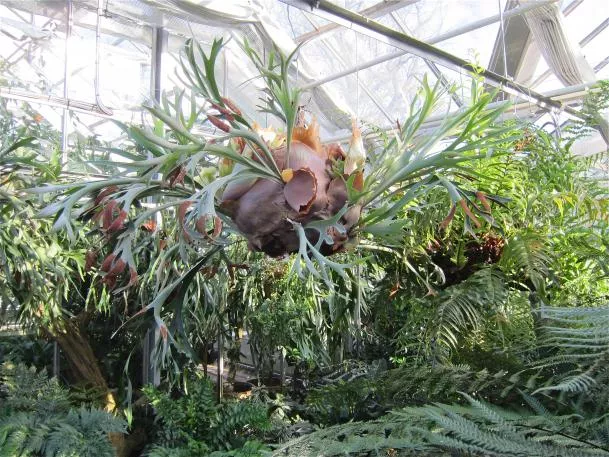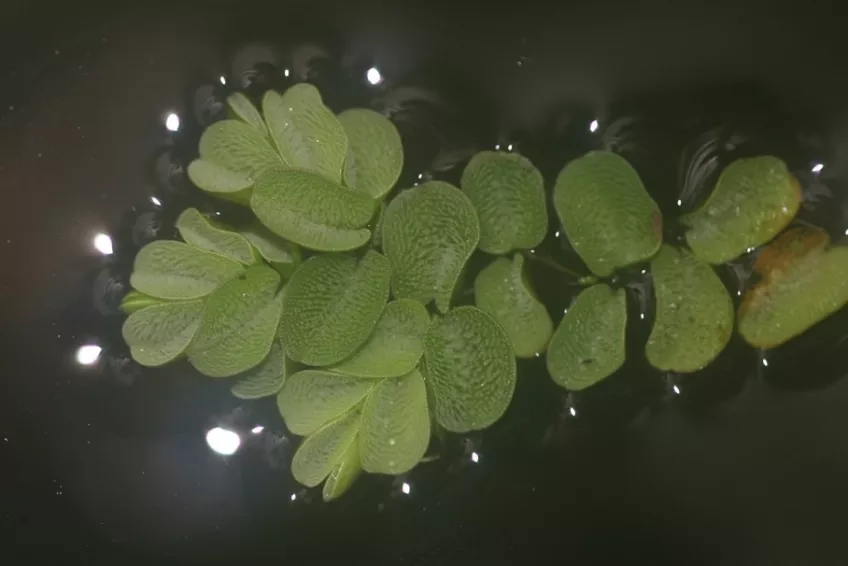Fernery
In the fernery we take a leap back in time, to a period in which ferns and lycopods covered the face of the Earth. The climate was warm and humid and no flowering plants had evolved yet. Fossils of lycopods show that this group has existed for 500 million years, whereas the first ferns appeared later, approximately 360 million years ago. In the fernery, there are representatives of all the major evolutionary lineages in ferns. There are also examples of a wide range of life forms, e.g., tree ferns and aquatic ferns.
Giant salvinia (Salvinia molesta)
Giant salvinia (Salvinia molesta) is native to southeastern Brazil. It is an aquatic fern floating with its stems and leaves on and below the water surface.
Giant salvinia is covered by outgrowths looking like small whisks on the leaf surface turning upwards. This is an adaptation to life in water and makes the fern unsinkable.
Under optimal conditions, that is a temperature of 30°C and plenty of nutrients, it has the ability to double its biomass in 5–6 days. In other words, it grows extremely fast. That also means that Giant salvinia has become an invasive weed in tropical areas to which it was brought by humans.



